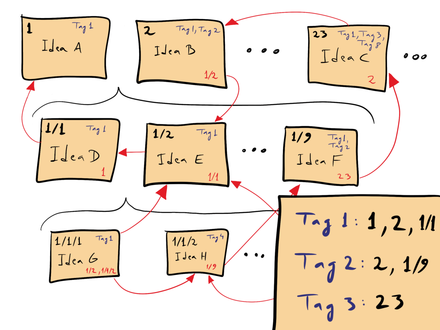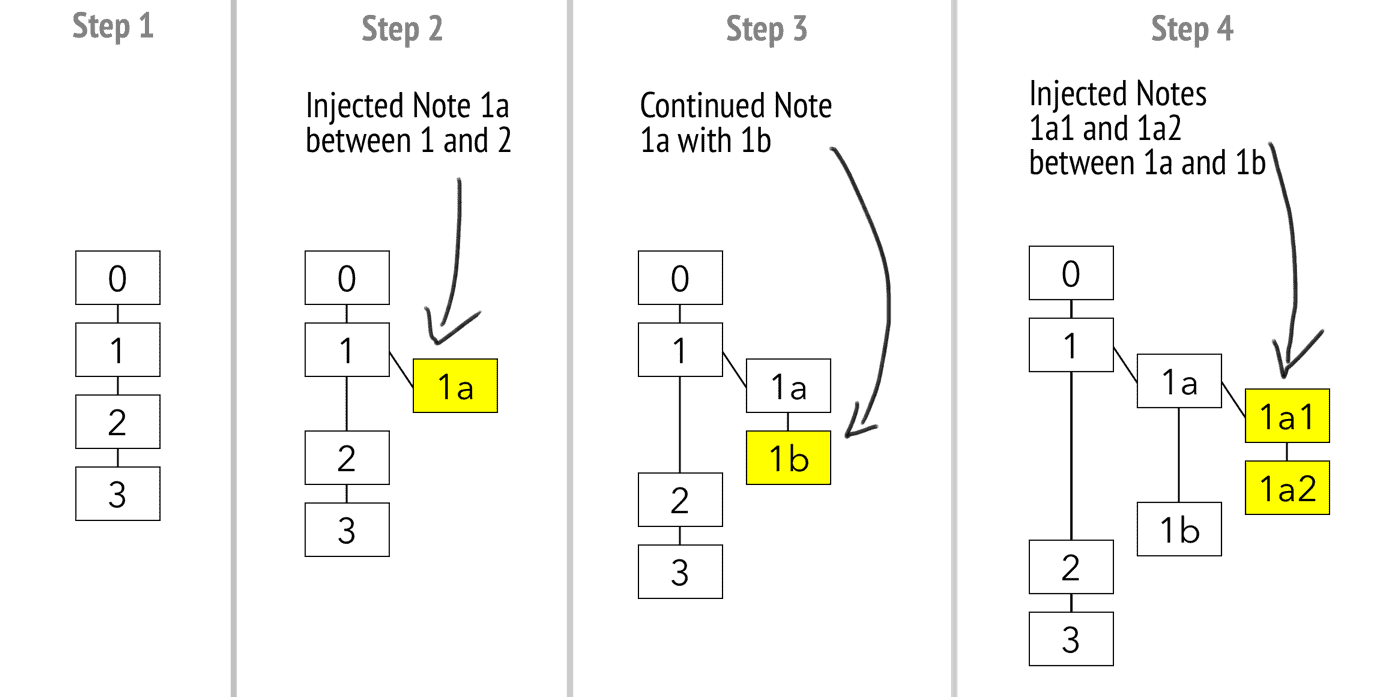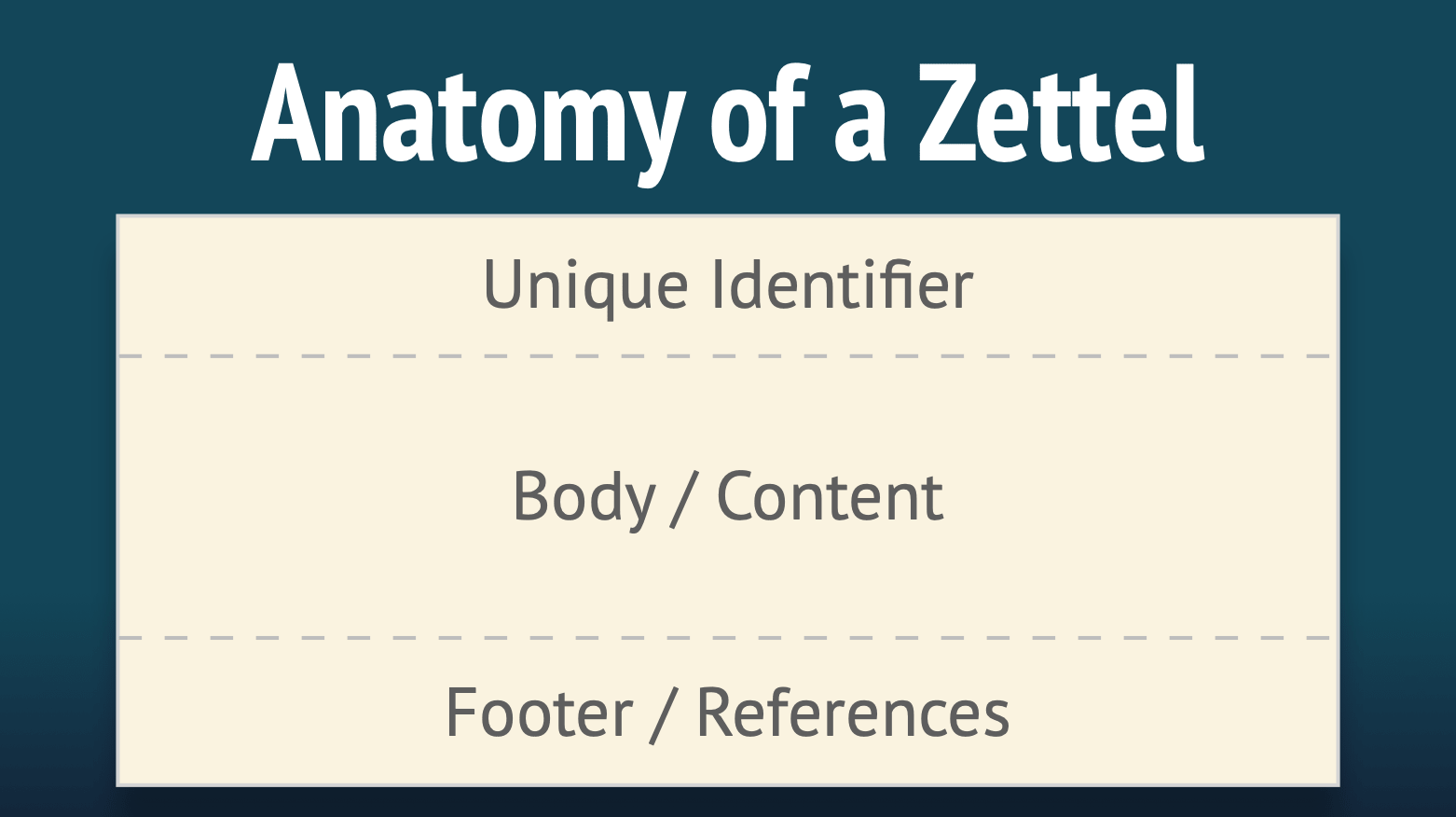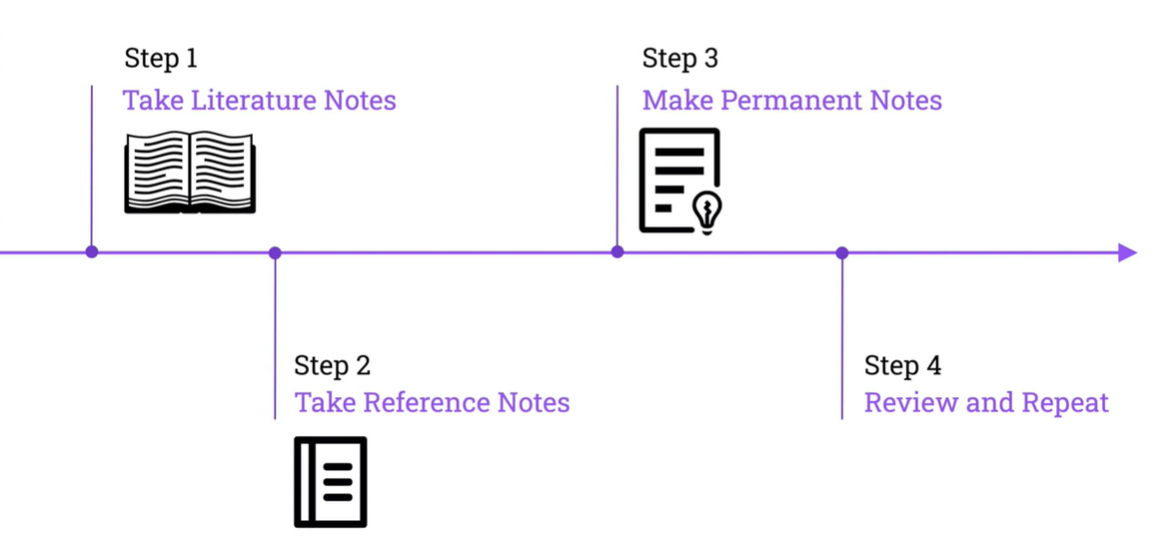Este 22 de junio daré un charla en la Jaquería sobre jardines digitales, la charla/taller durará en torno a hora y media / 2 horas con lo que me gustaría que fuese bastante interactivo. En esta note escribiré que es lo que quiero hacer y como la voy a organizar.
What is a digital garden / zettelkasten?
A digital garden is a collection of evolving ideas that are connected by contextual associations. It differs from a blog because the content is not finished, the concepts are free to change and evolve in the future. A digital garden is not organised by date, tags, or categories, it is organised by contextual connections as a work-in-progress wiki.
A digital garden is a metaphor of growing ideas over time, adopted from the method called zettelkasten.
The original method of zettelkasten was proposed by Niklas Luhmann, a highly productive social scientist. The original method was based in physical paper notes describing thoughts, connected to other thoughts in the net and stored in drawers.
This method lets you to be more productive, more creative, preserve the knowledge, organized tool over time, an organic way to write, store, and read concepts.
What method do you use to store your knowledge? What benefits does it have? What flaws has your method?
Let the room decide, give 5 minutes.
Original method
Why
- High effective
- Sorted over time
- Orgnic, is natural for our brain to think this way
- Open and abstract. Lets you to navigate in your thoughts without restrictions.
- At the beginning it could be difficult to start because the lack of concepts, but quickly it makes sense
Origins
It has long been used by individual researchers over time. This systems is similar to others, and it was used by different techniques but similar among them. This method was described in detail by Niklas Luhmann that used this system between 1927 and 1940. Niklas Luhmann was able to publish 50 books and over 600 articles. Luhmann himself stated that his productivity stems from working in a partnership with his Zettelkasten.
Who it works? Original method
The original method of Luhmann was a collection of notes on paper slips, containing thoughs and relations of this thoughs in the net. Each note is a though, something you learnt from a article, from a video, from yourself. Each note is composed by a identifier, optional tags, the content of the note, and the relation of this note with the network. For Luhmann it was possible to get all the content of a certain topic by navigating in the notes by their relation with other notes.

Each note has an identifier, it must be unique to access only one note. This identifier can be based on time, on the title, or in the address of the note. Luhmann had a smart solution for the identifier by a numeric system where note identifier of the note was the rank of the note.

The first note of the net would have the identifier 1. If you add a second note that is not related to the first note, it is assigned the number 2. But if you want to continue the first note, or inject something into its content, comment on it, or something along those lines, you branch off. That new note would get assigned the number 1a. If you continue with this new note, you would go on with 1b. If you then want to comment on the note 1a, you would create a note with the address 1a1. So, in short, whenever you continue a train of thought, you increment the last position in the address, be it number or a character from the alphabet.
This method had two advantages:
- It has an organic growth. Expand the content of a thought adding a sub-note.
- Links are possible. The most important point of zettelkasten method is to link a concept, no matter where is your note as long as you can link it to the network. These unique identifier let you to link you concepts easily.
Important factors of a Zettelkasten
Some important factors of a Zettelkasten:
- Embrace the connection. This system is based in the connection of the thoughts in your brain. It is not a collection of text, a zettelkasten is the connection of this ideas in the network. For this reason each note must have an identifier that you can use to find the note in the network.
- Principle of Atomicity: Each note has one unit of knowledge and only one. Each note is a atom of knowledge, which together with other notes forms a molecule. A book is a collection of thoughs sorted by chapters. The chapter of a book can be seen as the coordinates. A book is not a web of thoughts. In the case of wikipedia, it is not a web of thoughts, each article or section is made of multiple toughts and you can not reference only one thought. Wikipedia is not a thinking tool but a tool for information retrieval. A zettelkasten is a tool for thougth, thus each thought is a base unit. Each zettel must be only one thought in order to be referred in the future, a well defined unit of knowledge.
- Each zettelkasten for each person. This method is a personal thinking tool, and should be a private garden. It is personal because the connections you create are unique for each person, not everyone thinks in the same way. It should be private because you don’t write with the same freedom for yourself than for a group of people. The advantage of a diary is that is private, is a space where your are not judged and that is why you can let yourself dig in your emotions. In a zettelkasten is the same but with ideas.
- Each note is constantly changing, not only the content, the references it creates in the network. A thought can be sketch at first and then developed in the future. Weird connections can develop from the notes when you think about them. A zettelkasten is a constantly evolving tool. Sometimes you would think that some concepts that you write are useless, that you are wasting your time writing about concepts that are not going to be developed. However, this tool is always useful, each thought is valuable in the network, but you might not seen it yet. A crazy idea can change to a interesting idea but it is not mature enough the idea or the network to realise it.
- Bidirectional. A note can have multiple parents, at least one parent, and multiple child, or none. Each note must have at least one note that reference it, for example if we think in a note of a car, there should be the note of a wheel, so at least each note has a parent. However each note can have multiple, or none, child references, understood as child references in the note. In digital zettelkasten you can view the references of a note in the network, but in a physical one you must navigate in the net to get the incoming references of a note.
We can conclude that a a zettelkastel is a personal tool for thinking and writing. It is based in the connection of individual thoughts that generate a network. The difference to other systems is that you create a web of thoughts instead of notes of arbitrary size and form, and emphasize connection, not a collection. Each thought is constantly changing and evolving in more thoughts and new connections.
A zettel
Each zettel is composed by:
- A unique identifier. It is necessary in order to reference the thought in other notes. This identifier can be in multiple types, as the position in the network, a timestamp, the title of the note, etc.
- The body of the zettel. The piece of knowledge. The content itself can reference other notes to describe itself.
- References. At the bottom of each Zettel is a reference of the source of knowledge you capture, or leave it blank if you capture your own thoughts.

Identifier
Body
Relations must be explained in order to be useful.
The main benefit from connections is their effect on you and your brain: When you relate pieces of knowledge to others, you create relationships between pieces of knowledge. Knowledge relationships significantly improve recall, and forming them also trains your mind to see patterns.
References
Structure notes
Notes that collect notes, like hub notes.
Zettelkasten Method - How to write notes

Some useful tips
Siguiente girito
Documentar mientras haces tareas, hacer tareas mientas documentas. Implementar más sistemas al sistemas zettelkasten.
How to implement a Zettelkasten
If you choose software to handle your Zettelkasten, there are some features the software should have. Below is an essential checklist for features you should look for:
- Create connection between notes. Easy to reference other notes in the network.
- Full text search. The physical method did not have this feature, however it is really helpful to dig in your notes.
- More features and easy to use better. Drop pictures, create headings, create tables, check list. As much as features better.
- Reference system, like bibtex.
- It would be better to render a graph with the connections of your notes.
In case you would like to have a public digital garden:
- Exporter to a public webpage.
Herramientas para contruir tu jardín digital:
- Zettlr
- Obsidian
- Roam research
- TiddlyWiki
- Thunk notes
- Org-mode and org-roam
- Flux garden
- Lot of examples here